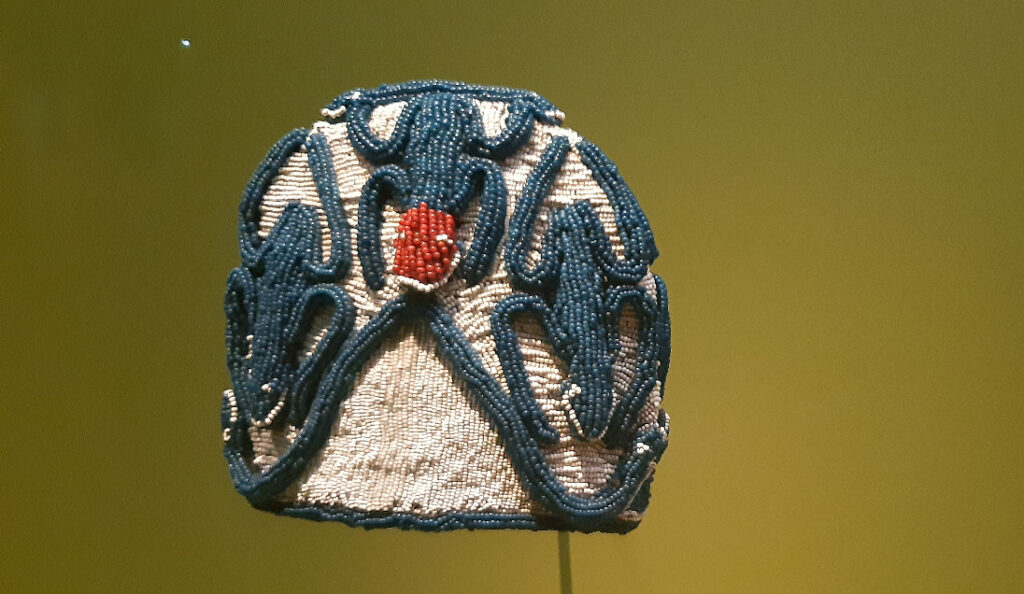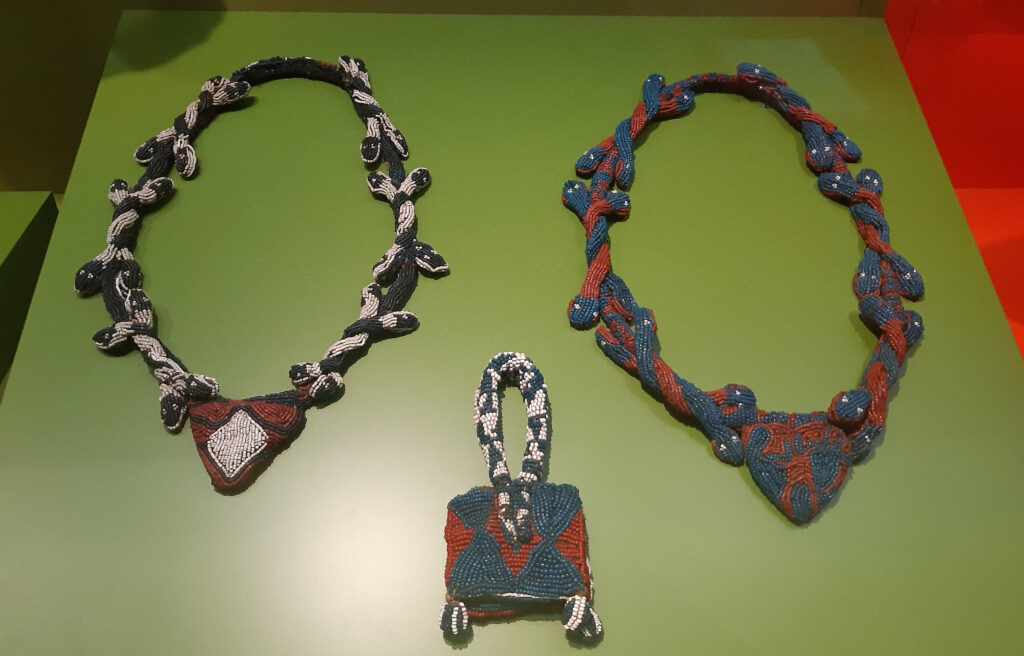The royal objects of Nso; woven, sculptured and sewn delicately with sacred fabric, pieces and wood. They are symbolic and potent with power and divinity. They were looted by the German invaders seeking to assert dominance and control of the people. Ngonnso; the mother of her people was diabolically separated from her children. Who then to take care of them? The Ntara? Stolen! The Cava? Looted! The Sakinchiy? Pillaged!
As spelt out in the royal letter sent to the Linden-Museum in Stuttgart in 1998:
“These …objects are – as they have always been – very important for mobilizing Nso’ people for both cultural and development activities”.

Germany is returning Ngonnso (Read here for more), but is this enough? Locked up in the museums are the other divine elements. Were they gifts? Certainly not! Because is it a gift if you have a knife to your neck?
The people of Nso demand the return of the other royal elements which in fact play complementary roles with Ngonnso.
As the Cameroonian adage goes “one hand no fit tie bundle”. Can one hand wrap a cord around the broom that shall sweep away the dirt of pain and turmoil that the people of Nso have had to endure? Certainly not. Ngonnso is the right hand. Very important and indispensable. The left hand constitutes the other royal objects. Let’s have a look at some of them.
Cava: The royal throne
Like most royal palaces in the world, the throne is the centerpiece. It is upon this sacred object that the ruler in his majesty and glory sits upon. Seated on the throne, the Fon had/has to take decisions or make pronouncements binding on the land.
One important function of the thrones designed in the shape of the one hosted in the museum is that during the burial of a Fon, they are used as a seat for the dead Fon in the grave. This is because the Nso’ people believe that their Fon has rather transformed into a spirit and will come back to influence their lives. For that reason he cannot be buried like any ordinary Nso’ person. So even in the grave, the throne still has a spiritual relevance to the People.

Ntara: The royal cap
Caps are significant in the cultural and traditional life of the Nso’ People because each occasion or event warrants the type and nature of the cap to be worn.
In the case of the Fon, they would be called crowns. Worn at social and cultural demands, which in most cases are based on initiation into specific cults or lodges and royal recognition.
The cap is thus used in the enthronement of the successor and as is believed transmitting the spiritual power from one Fon to another. The disappearance of the royal cap in 1902 was therefore a serious challenge to the spirituality of the Fons of Nso. The chain was broken with Sehm II who with the disappearance of the cap could not transmit the spirituality acquired from his predecessors to his successors.

Sarkinchiy: The royal necklaces
The royal necklace, like the royal cap and throne worn by a Nso Fon cannot be worn by any ordinary citizen. In the same light the social, cultural and traditional roles of the royal necklace are the same as those of the royal cap. At the burial of a Nso Fon the necklace is removed from his neck as well as the cap and he is then called by his name, thereby giving the existence of an individual. Same as the royal cap, the necklace is used in the enthronement of the successor therefore ensuring spiritual transmission across reigns.
These are a few of the many objects that lay in institutions in Germany that need to be returned.

The cultural and spiritual relevance of these artifacts as complementary accompaniments to the spiritual and cultural relevance of Ngonnso cannot be over-emphasized. Therefore acknowledging the urgency of sending back Ngonnso to her land without equally acknowledging that same urgency in re-establishing the holistic health of the People by restituting the royal cap, the royal necklace and the age-old throne, would be an incomplete show of humanism and love of fraternity.
Bulami Edward

Researcher and expert on Nso royal objects, Spokesperson/Translator of the Fon



